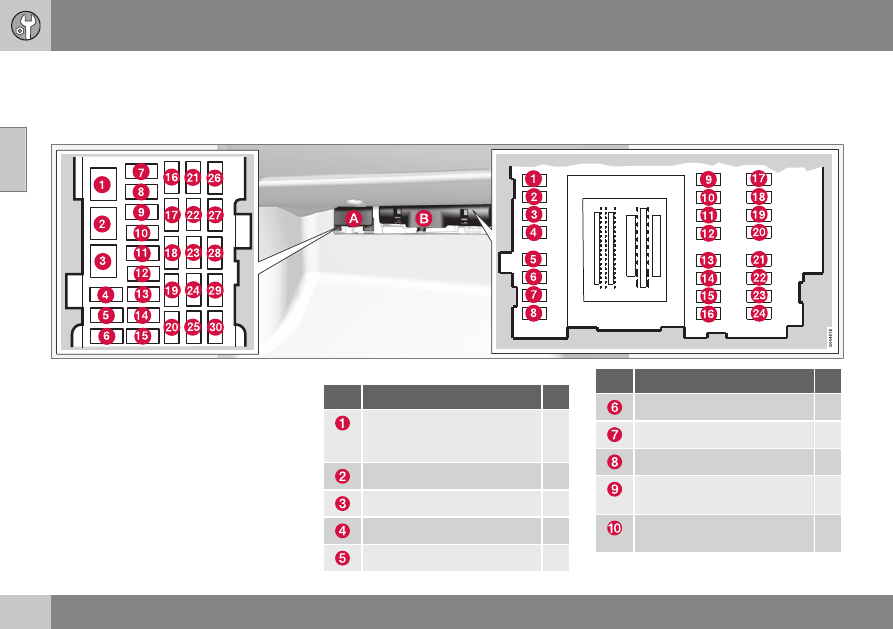Volvo XC70 (2016 year). Instruction - part 22

10 Maintenance and servicing
10
354
*
Option/accessory, for more information, see Introduction.
Fuses – glove compartment
The fuses under the glove compartment pro-
tect components such as the infotainment
system and optional power seat.
Fusebox A: General fuses
Fusebox B: Control module fuses
Fold aside the upholstery covering the fuse-
boxes.
1. Press the cover's lock and fold it up.
2. The fuses are accessible.
Positions: fusebox A
Pos Function
A
Circuit breaker for the infotain-
ment system and for fuses
16-20
40
-
-
Heated steering wheel*
10
-
Pos Function
A
-
12-volt socket (cargo area)
15
Controls in driver's door
20
Controls in front passenger's
door
20
Controls in right rear passeng-
er's door
20